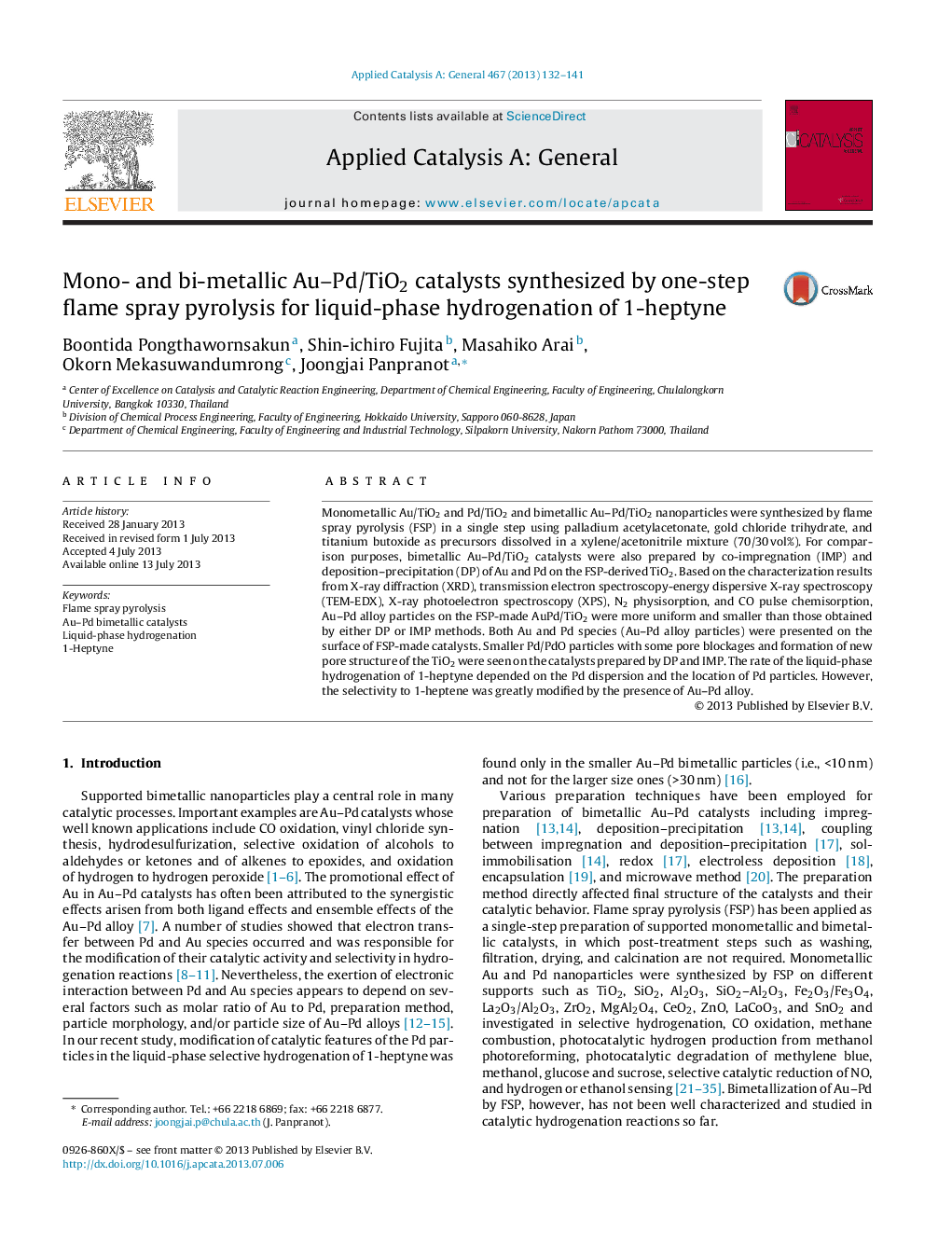| Article ID | Journal | Published Year | Pages | File Type |
|---|---|---|---|---|
| 40044 | Applied Catalysis A: General | 2013 | 10 Pages |
•Au–Pd/TiO2 were synthesized by the single step flame spray pyrolysis.•FSP resulted in more uniform and smaller Au–Pd particles compared to IMP and DP.•Rate of 1-heptyne hydrogenation depended on Pd dispersion and location.•Selectivity to 1-heptene was greatly modified by the presence of Au–Pd alloy.
Monometallic Au/TiO2 and Pd/TiO2 and bimetallic Au–Pd/TiO2 nanoparticles were synthesized by flame spray pyrolysis (FSP) in a single step using palladium acetylacetonate, gold chloride trihydrate, and titanium butoxide as precursors dissolved in a xylene/acetonitrile mixture (70/30 vol%). For comparison purposes, bimetallic Au–Pd/TiO2 catalysts were also prepared by co-impregnation (IMP) and deposition–precipitation (DP) of Au and Pd on the FSP-derived TiO2. Based on the characterization results from X-ray diffraction (XRD), transmission electron spectroscopy-energy dispersive X-ray spectroscopy (TEM-EDX), X-ray photoelectron spectroscopy (XPS), N2 physisorption, and CO pulse chemisorption, Au–Pd alloy particles on the FSP-made AuPd/TiO2 were more uniform and smaller than those obtained by either DP or IMP methods. Both Au and Pd species (Au–Pd alloy particles) were presented on the surface of FSP-made catalysts. Smaller Pd/PdO particles with some pore blockages and formation of new pore structure of the TiO2 were seen on the catalysts prepared by DP and IMP. The rate of the liquid-phase hydrogenation of 1-heptyne depended on the Pd dispersion and the location of Pd particles. However, the selectivity to 1-heptene was greatly modified by the presence of Au–Pd alloy.
Graphical abstractFigure optionsDownload full-size imageDownload high-quality image (106 K)Download as PowerPoint slide
